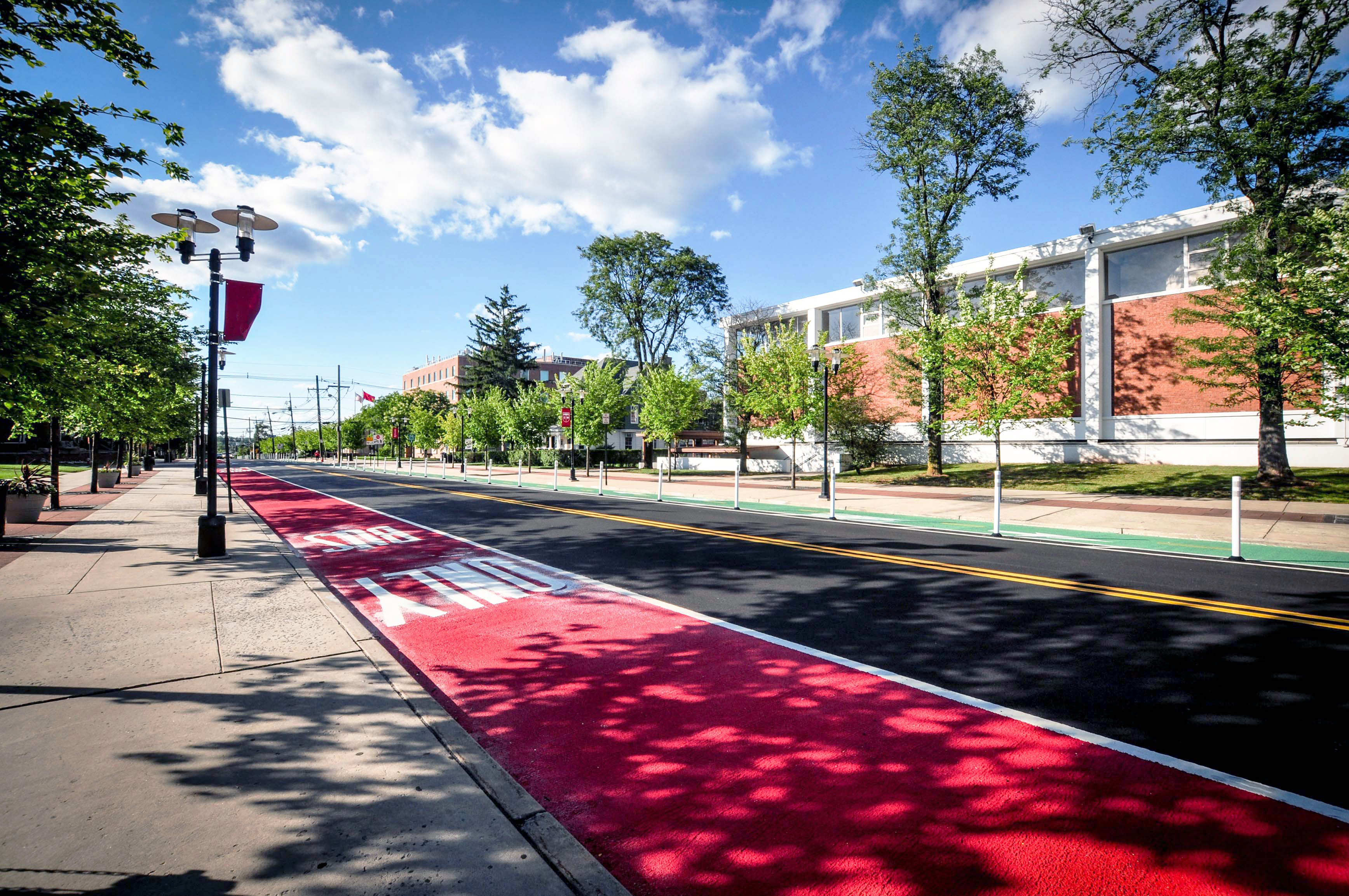
March 2024
Getting on the Bus: The Revitalization of Public Transportation
Revamped Bus Lanes and the Right Pavement Coating
The COVID-19 pandemic initially led to a significant drop in public transportation usage, with ridership plummeting to a mere 20% nationally in April 2020. But usage is back on the upswing as workers gradually return to their commutes, with ridership recovering to more than 70% of pre-pandemic levels.
This revival has prompted cities across the nation to invest more heavily in public transportation infrastructure. For instance, Philadelphia, the sixth largest city in the U.S., added 1.75 miles of bus lanes in 2023, with reports of a 39% year-over year growth in metropolitan bus ridership.
In the hustle and bustle of urban city life, bus lanes are more than just painted lines on pavement. They play a crucial role in reducing traffic volume and significantly improving commute times. These modern investments represent a seismic shift in transportation infrastructure improvements in cities across the United States, reflecting a commitment to public transportation and the creation of more livable, accessible and environmentally conscious roadways.
A key aspect of these improvements is the selection of the right road coating – for durability and to help enhance safety.
Benefits Beyond Buses
To ensure bus lanes make roadways safer for all travelers – pedestrians, bicyclists and motorists – municipal planners need to ask a series of questions. Will the pavement coating that is selected for the lanes be skid resistant? Will the marking be high visibility? Is the application resistant to wear and tear of heavy bus traffic? Does it comply with local transportation regulations? What about the standards and guidance in the newly published 11th Edition of the Manual on Uniform Traffic Control Devices for Streets and Highways?
PPG’s Traffic Solutions business can help address these questions to ensure cities and towns do not need to compromise on performance in their road coating upgrades. ENNIS-FLINT® by PPG MMAX® Extended Season area markings offer superior grip, color retention and lifespan. Known as MMAs due to their methyl methacrylate composition, these road coatings have an average life span of between six and eight years under heavy traffic conditions. MMAX Extended Season area markings also use the hardest, most wear-resistant aggregate in the market for top-tier skid resistance specifications.
Enhancing Safety, Improving Traffic Flow
Investments in dedicated lane markings are a testament to cities’ commitment to the safety of transit passengers. And with enhanced traffic flow, transit vehicles can pick up passengers more safely and efficiently without having to leave the designated lane.
Bus transit lanes are painted a distinctive shade of red to make it easier for drivers to recognize and distinguish the lane from others, thereby helping reduce conflicts between buses and other vehicles. This separation also helps reduce the likelihood of accidents resulting from sudden lane changes.
The red shade used for bus lanes enhances high visibility and serves as a visual deterrent for drivers mistakenly, or intentionally, using the bus lane. The hue creates a well-defined and predictable path for bus lanes and helps foster a safer environment for riders.
A study from the San Francisco Municipal Transportation Agency found that the implementation of red painted transit lanes resulted in a 16% decrease in collisions and a 24% drop in collisions that result in injury.
Making the Mark
Infrastructure investments nationwide call for cities to select a product for lane application while weighing several key considerations: longevity, visibility, ease of application, environmental factors and skid resistance.
MMAX Extended Season area markings are a specialized product designed for color retention, high friction and long-lasting performance. MMAX Extended Season area markings are suitable for a wide range of temperatures and environments. The product offers versatile application capabilities, can be sprayed or squeegeed on pavements, making it a reliable choice for virtually all projects.
The benefit: Roads can reopen to traffic in as little as 20 minutes after application, allowing for efficient turnaround time in high traffic zones. In warmer climates, MMAX Extended Season area markings can be applied to pavement surfaces as hot as 150° F (66°C). The same cannot be said about traditional MMAs, which have lower application temperature limits that can create work stoppages, forcing crews to work in the cooler evening hours. When improperly cured on hot surfaces, traditional MMAs may even experience failures that lead to poor marking performance. In contrast, MMAX Extended Season area markings are able to fully cure on surfaces as cold as 35° F to as hot as 150° F.
Available in eight standard colors, MMAX Extended Season area markings can be used to designate bus lanes, bike lanes, crosswalks and more. Whether the application is utilized in low or high-traffic zones, the product can meet project requirements while enhancing visibility for all road users.
A Worthwhile Investment
While the number of transit riders has begun to climb again in recent years, the push for alternative public transportation is far from over.
The National Association of City Transportation Officials (NACTO) says that bus lanes can accommodate 10,000 to 25,000 people per hour, topping 600 to 1,600 people per hour in private vehicles.
For cities seeking durable and safety-focused solutions for bus lane applications, ENNIS-FLINT by PPG MMAX Extended Season area markings provide increased visibility, enhanced lane delineation and skid resistance to help cities improve traffic flow and help enhance safety for transportation. Municipalities considering their product options can also request a demonstration with PPG Technical Services.
The durability and high-visibility properties of MMAX Extended Season area markings open the door for long-lasting road markings that help enhance safety with minimal traffic disruptions.